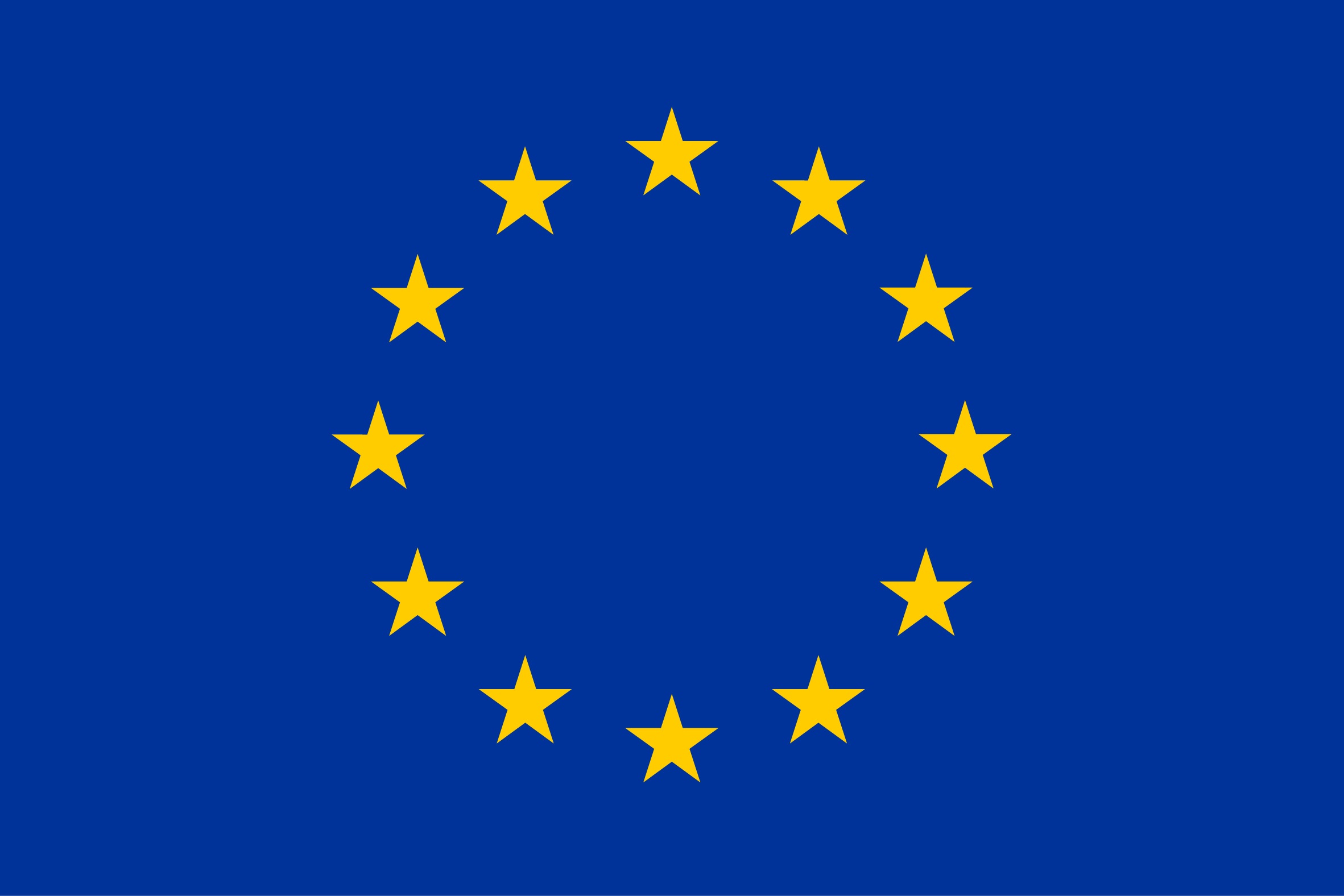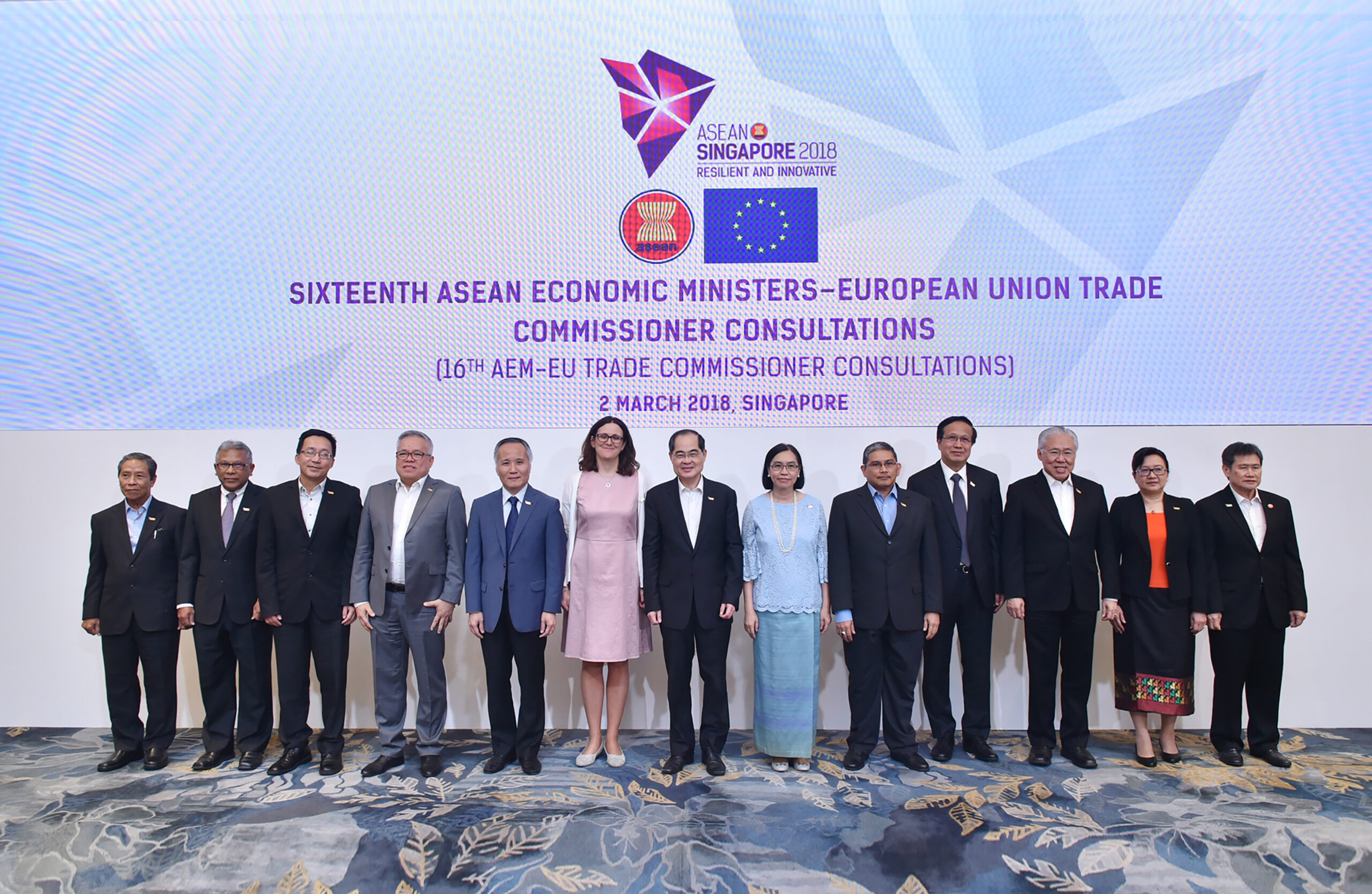Among other things, the unprecedented crisis of the Covid-19 pandemic exposed the need to do things more effectively.
One key area for this was in trade and logistics. The UN Conference on Trade and Development (UNCTAD) reported an increasing trend of import demand for manufactured consumer goods in 2020.
This number has almost doubled in the past decade and has resulted in an increasing number of shipping containers in sea ports and lines of trucks across border crossings. While delays and blockages of container traffic were well-documented at the time, many institutions learned key lessons from this experience.
Both the E.U. and ASEAN should now chart pathways for digital trade facilitation reform that enables greater trade connectivity between the two regions. Together, the blocs are home to 1.1 billion people and in 2022 were each other’s third largest trading partner after China and the U.S.
To do this, countries around the world are already turning to digital transformation to tackle systemic trade barriers by maximising the use of technology in simplifying trade procedures and automating where possible.
Among several approaches aimed at modernising trade facilitation, one proposal that frequently dominates the digital trade facilitation agenda is the implementation and use of a Single Window system.
Single Window systems create a “one-stop-shop” approach to streamline import and export procedures by funnelling documents and other data through just a single, standardised contact point, rather than multiple offices.
These systems are already in use, but can be further improved through digitalisation. Such upgrades will help boost regional, cross-border paperless trade efficiency and competitiveness for economic growth, incentivising trade partners to become more deeply involved in global value chains.
Single Window has already helped ASEAN countries expedite cargo clearance and reduce paperwork.
Bloc leaders agreed to form the ASEAN Single Window (ASW) in 2003 to enable the electronic exchange of trade-related documents across borders and expedite cargo clearance. Today, it is a regional initiative that connects National Single Window (NSW) systems in bloc member-states with the aim of promoting economic integration.
At the national level, Indonesia, Malaysia, Singapore, Thailand and Vietnam were among the first to implement Single Window within their national jurisdiction. They integrated the ASW in 2015, and the remaining member-states joined in 2019.

So far, it is highly relevant in handling the growing share of bilateral trade, which increased from 30-37% of total ASEAN trade from 2004-2018.
These increases in trade flows mean that companies and government bodies dealing with import/export procedures have to deal with larger volumes of paperwork. The extensive paper-based requirements, combined with their slow and complex procedures, traditionally have lent a serious burden to cross-border trade. This is where Single Window shows its value.
While ASEAN has already implemented a bloc-wide system, the E.U. is still working on the formulation of its own Single Window for customs. The European bloc on 24 October recently enacted new regulation establishing the necessary framework for digital cooperation between customs and other authorities within the region.
The regulation aims for a nine year period for the single customs system to go live by 2031. However, this might take longer than the targeted deadline.
This effort to establish the system began in 2008 with the enactment of the e-Customs Decision mandating the Commission and the member states to establish such a framework.
Despite being relatively new for the E.U., the Single Window should open opportunities for further exchange of more trade-related documents in the future within the bloc and beyond, including with trade partners such as those in ASEAN.
The two blocs marked 45 years of cooperation between two advanced regional blocs on 14 December at the ASEAN-E.U. Commemorative Summit in Brussels. There, the blocs made major commitments to strengthen economic cooperation and trade, aiming to promote “peaceful, secure, open, interoperable, reliable, inclusive and resilient digital economies.”
However, it seems that both the E.U. and ASEAN overlooked the importance of developing technical yet practical cooperation in trade facilitation efforts.
The blocs’ Joint Statement agreed on sustainable connectivity as part of the E.U. Global Gateway support. However, the key actions planned to address both digital and trade connectivity barely address the urgency of facilitation in connecting two regions.
Digital Trade Facilitation through Single Window

As the E.U. works on formulating their own Single Window, they can learn some lessons from ASEAN.
Although the E.U. Single Window only covers customs-related documents, it remains a breakthrough with potential of expansion in the future. Every minute, more than 600 customs declarations are processed around the E.U. by more than 70,000 customs officials working in the different member states.
They not only collect customs duties and value-added tax (VAT), but are also in charge of ensuring the products entering the E.U. Single Market are safe and secure, complying with health, environmental and other standards.
The time and financial cost needed for trade could be drastically decreased with the digital transformation of custom and trade procedures. Acceleration of trade digitalisation could mitigate the consequences of Covid-19 and further harness the recovery process beyond the current crisis.
The pandemic has helped drive a faster digital transformation and underscored the importance of paperless trade, including through Single Window. This transition is likely to be a protracted and challenging process that will require tight cooperation across nations.
Nevertheless, digital transformation has become more essential for trade facilitation in the post-pandemic world.
The critical importance of the Single Window is here to stay.
Pingkan Audrine is a research fellow in the connectivity cluster at the EANGAGE Project. Her research interests include international trade, digital economy, data protection and cybersecurity-related policy and issues.
The content of this article and the opinions expressed in this article are solely the author’s, and do not reflect the opinion of the EANGAGE Project, its partner organisations (Konrad-Adenauer-Stiftung, the Diplomatic Academy of Vietnam and the Asian Vision Institute) or the European Union (EU) and the Association of Southeast Asian Nations (ASEAN).
This article was supported by the “Think Next, Act Next – The Next Gen EU-ASEAN Dialogue” (EANGAGE) Project funded by the European Union and the Konrad-Adenauer-Stfitung. EANGAGE is designed to nurture the next generation of researchers and thought leaders in Southeast Asia and promote better awareness of the EU’s foreign policy objectives and the EU’s engagement in the ASEAN region.




